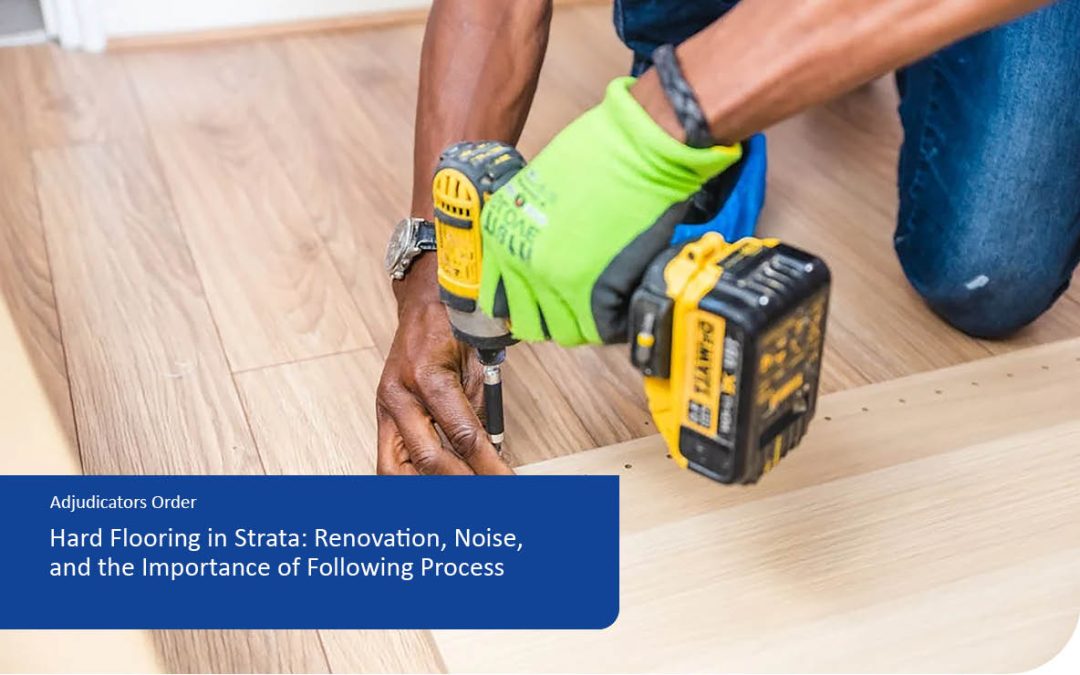Australians’ love for home renovation continues to thrive, and in strata schemes, one popular upgrade is replacing carpet with hard flooring. The appeal is understandable—hard floors are easier to clean and can help reduce allergens like dust mites and pollen, offering relief to hay fever sufferers.
Following a rise in noise complaints and claims of nuisance, many bodies corporate have introduced specific by-laws addressing hard flooring installations and noise transference. It’s important to note, however, that there is no “one-size-fits-all” approach—each scheme may have its own unique requirements and thresholds.
While owners can sometimes access their building’s original construction plans through local council records, these plans may not accurately reflect the final built conditions. Buildings are not always completed exactly to architectural specifications, which can further complicate matters when disputes arise.
A recent case highlights the complexities surrounding this issue. It involved a dispute between two lot owners (one living above the other) in a high rise adjacent to the Brisbane River, Southbank.
The Applicant lived in the lower unit and alleged that noise from the Respondent lot above her constituted a nuisance under section 167 of the Body Corporate and Community Management Act 1997. The Applicant’s evidence included details of the way in which her life had been disrupted by noise, including the fact that she was prescribed medication to help her sleep during episodes of noise.
As part of the application, the Applicant have submitted a detailed noise log, claiming excessive sound from the upstairs neighbour Respondent, who had installed hard flooring.
However, the Respondent argued the Applicant had a heightened sensitivity to noise and provided compelling evidence of her own in return, including:
- records showing the Applicant had previously complained about noise transference before the Respondent replaced carpet with hard flooring; and
- documentation demonstrating the Respondent’s efforts to mitigate noise, such as installing high-grade underlay and acoustic rubber exceeding required specifications at the time of installation.
In somewhat of a mis-step, the Applicant asked the Adjudicator to disregard her previous complaints prior to the hard flooring installation on the basis that the Applicant could not show the flooring did not breach legislation at the time they were raised with the Committee. Unfortunately this did not curry favour with the Adjudicator.
Ultimately, the Adjudicator dismissed the application.
It was determined that the noise stemmed from the “ordinary and accustomed use” of the upstairs lot. Additionally the Adjudicator noted the Applicant had failed to make a genuine effort to resolve the issue through internal dispute resolution before escalating the matter.
Key Takeaways:
- Seek approval early: Before beginning any renovations, particularly those involving hard flooring, check your scheme’s by-laws and obtain necessary permissions.
- Understand by-law variation: Rules around flooring and noise vary between bodies corporate—never assume yours will match another scheme.
- Document carefully: If you’re making a complaint or defending against one, detailed records and evidence are essential.
- Resolve disputes internally first: Attempting internal dispute resolution is not just encouraged—it’s often a legal prerequisite before lodging formal applications.
As renovation trends continue, so too does the need for clear communication and adherence to by-laws within strata communities. A proactive approach can save time, money, and neighbourly relations.
If you want to read the case, you can find it here: https://classic.austlii.edu.au/au/cases/qld/QBCCMCmr/2025/281.html
